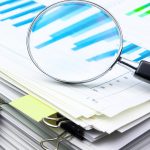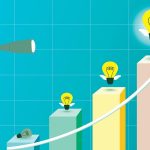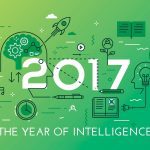What is a Single view of the customer? Till some time back, a single view of customer meant bringing together all data for customer and consolidating into a single record. Driving force behind single view of customer within an organization was usually operational. Marketing was merchandise driven and strictly followed quarterly planned marketing calendars and hence was content … [Read more...] about How to Achieve a Single Customer View in Ecommerce
Big Data
Learn everything you need to know about big data. Find out how companies are using this revolutionary technology and what it means for your business strategy.
How to Find the Best Tools for Data Collection and Analysis
Most marketers have a problem trying to obtain accurate data that is provided by the tools provided by Google. Inaccurate data can create a conflict between the marketing departments and the management. The local search results might be correct but the efficacy of the data collection tool is essential. Instead of relying on free tools offered by Google, know how to find … [Read more...] about How to Find the Best Tools for Data Collection and Analysis
How to Control Crime with Big Data and Predictive Analytics
Law enforcement has many highly sophisticated tools available for helping to pin down those who commit crimes. Cyber criminals are more difficult to catch than those who commit theft and assault, and still more difficult is preventing crime before it happens. Big data is proving very useful for filling in these gaps in law enforcement technology, providing insights and … [Read more...] about How to Control Crime with Big Data and Predictive Analytics
5 Ways How Businesses and Consumers can both Reap Rewards of Big Data
A companys data is commonly considered one of their most important assets, provided it is managed effectively. If data is mismanaged, it will either grow into a business liability, or at the very least, a company will not perform as well as it could have if its information was: Captured and input properly, with effective spelling and consistent formatting Classified and … [Read more...] about 5 Ways How Businesses and Consumers can both Reap Rewards of Big Data
The Top 7 Big Data Trends for 2017
It is the end of the year again and a lot has happened in 2016. Googles AlphGo algorithm beat Lee Se-dol in the game of Go, Blockchain really took off and governments around the globe are investing heavily in smart cities. As every year, I will provide you with the big data trends for the upcoming year, just as I did for 2014, 2015 and 2016. 2017 promises to be a big year for … [Read more...] about The Top 7 Big Data Trends for 2017
What is big data?
Big data is a term that refers to the massive amount of digital data created and shared every day. Big data can transform how we live, work, and communicate. It can be used to improve everything from public health and urban planning to business and marketing.
Big data is also changing the way we think about privacy and security. The volume, velocity, and variety of big data present challenges and opportunities for organizations and individuals. Regardless, big data is here to stay, and its impact will only continue to grow in the years to come.
What is big data analytics?
Big data analytics is the process of turning large, complex data sets into actionable insights. Businesses use various analytical tools and techniques, including machine learning and statistical analysis, to do this.
Big data analytics can be used to improve decision-making in areas like marketing, operations, and customer service. It can also be used to identify new business opportunities and optimize existing processes. With the help of big data analysis, businesses can gain a competitive edge by using their data better.
Want to learn more about big data? Datafloq has courses available. Contact us to get started.
When was big data introduced?
The term big data was coined in the 1990s, with some giving credit to John Mashey for popularizing the term. However, the concept of big data has been around for much longer.
Where does big data come from?
In the early days of computing, scientists and businesses began to realize that the amount of data being generated was increasing exponentially. As a result, they began to develop new methods for storing and processing data.
Over time, these methods have become increasingly sophisticated and have played a key role in enabling businesses to make sense of vast amounts of information. Today, big data is used in various industries, from retail to healthcare, and its importance is only likely to grow in the years to come.
What are examples of big data?
One of the most common examples of big data is social media data. With over 2 billion active users, Facebook generates a huge amount of data every day. This includes information on user interactions, posts, and even location data. Analyzing this data can help companies better understand their customers and target their marketing efforts.
Another example of big data is GPS signals. These signals are constantly being generated by devices like cell phones and fitness trackers. When combined with other data sets, GPS signals can be used to provide insights into everything from traffic patterns to human behavior. Finally, weather patterns are another type of big data set. By tracking these patterns over time, scientists can better understand the impact of climate change and develop strategies for mitigating its effects.
How do companies use big data?
Companies use big data in marketing, product development, and customer service. By analyzing large data sets, businesses can identify patterns and trends that would be otherwise difficult to spot. For example, a company might use big data to track customer behavior patterns to improve its marketing efforts.
Alternatively, a company might use big data to improve its products by identifying areas where customers are most likely to experience problems. For instance, big data can be used to improve customer service by finding pain points in the customer journey. Ultimately, big data provides companies with a valuable tool for gaining insights into their business operations.






